Art Fairs
5 of the Best Artworks to Be Found at the Armory Show, From a $210,000 Livestream of the Sun to the ‘Amazing Black-Man’
It's well worth sticking your hands in your pockets and heading out to the fair this year.
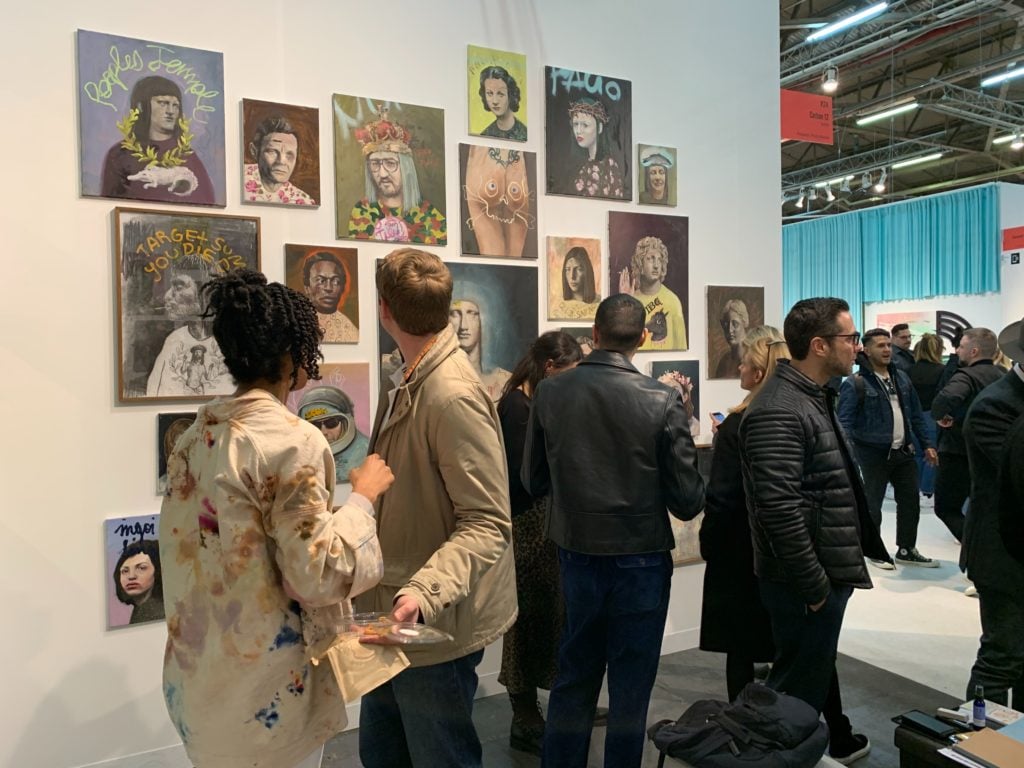
It's well worth sticking your hands in your pockets and heading out to the fair this year.

Andrew Goldstein

With anxiety over the coronavirus almost palpable in New York, this year’s Armory Show could have been a disaster, with collectors seeing the large-scale gathering of an art fair as a heedless risk. Instead, it was something of a triumph.
People were crowding the aisles, confabbing about their awkward new handshake replacements—bows were popular—and, somewhat miraculously, buying a good deal of art. Red dots proliferated, particularly at lower-priced booths like that of Dubai’s Carbon 12, where the Austrian artist Philip Mueller’s antiquity-meets-punk-rock portraits—priced between €700 and €8,600—created something of a low-level frenzy.
Huge credit here is due to Nicole Berry, the director of the Armory Show, whose sangfroid in the face of calamity was demonstrated when one of the two piers on which the Armory Show sits was deemed unsafe last year (her first year!). At this year’s opening, she could be seen racing the floor with a steely smile and phone to her ear. But credit should also go to the art community, which kept hysteria at bay and gamely kept calm and carried on, ensuring that the economic bite would not be too dire on artists and their galleries, at least not yet.
Here are some of the most notable works on view in what was also a unusually strong fair.
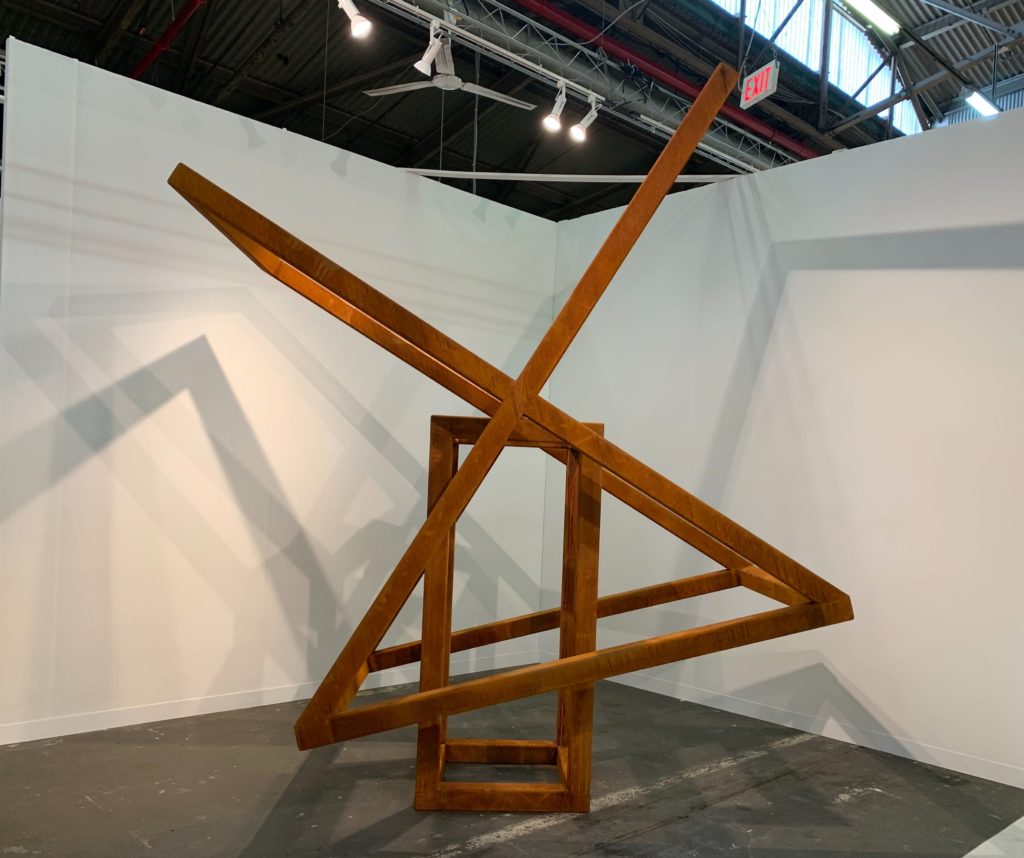
At the booth of Brazil’s Galeria Nara Roesler, two massive sculptures of Corten steel see-sawed back and forth like some kind of mesmerizing and slightly menacing magic trick. When a crowd gathered, wondering what high-tech device powered the sculptures, a gallery dealer smiled, walked over to the sculpture, and gave it a push. Physics.
Created by the Rio-based artist Raul Mourão, who forged the half-ton sculptures in Philadelphia to save on transportation costs, the works are intended to express the beauty of equilibrium—something Mourão feels is sorely lacking in this moment as the world is pulled to the extreme right and radical left. Left to their own devices, his artworks always eventually find their balance… and then require the brute force of a strongman (or woman) to again set them akilter.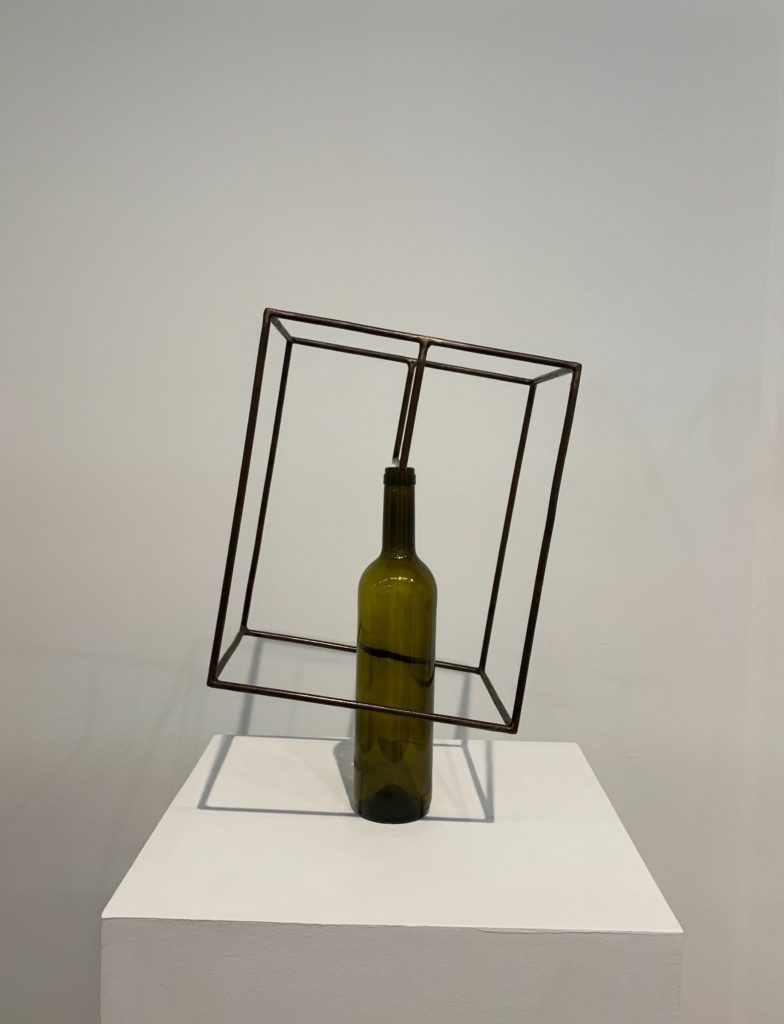
While the massive sculptures, made from Richard Serra’s signature material, are meant to be displayed outside, the artist has also created domestically scaled versions ($10,000) so you can marvel at the mechanics of the universe at home over a bottle of wine (literally).
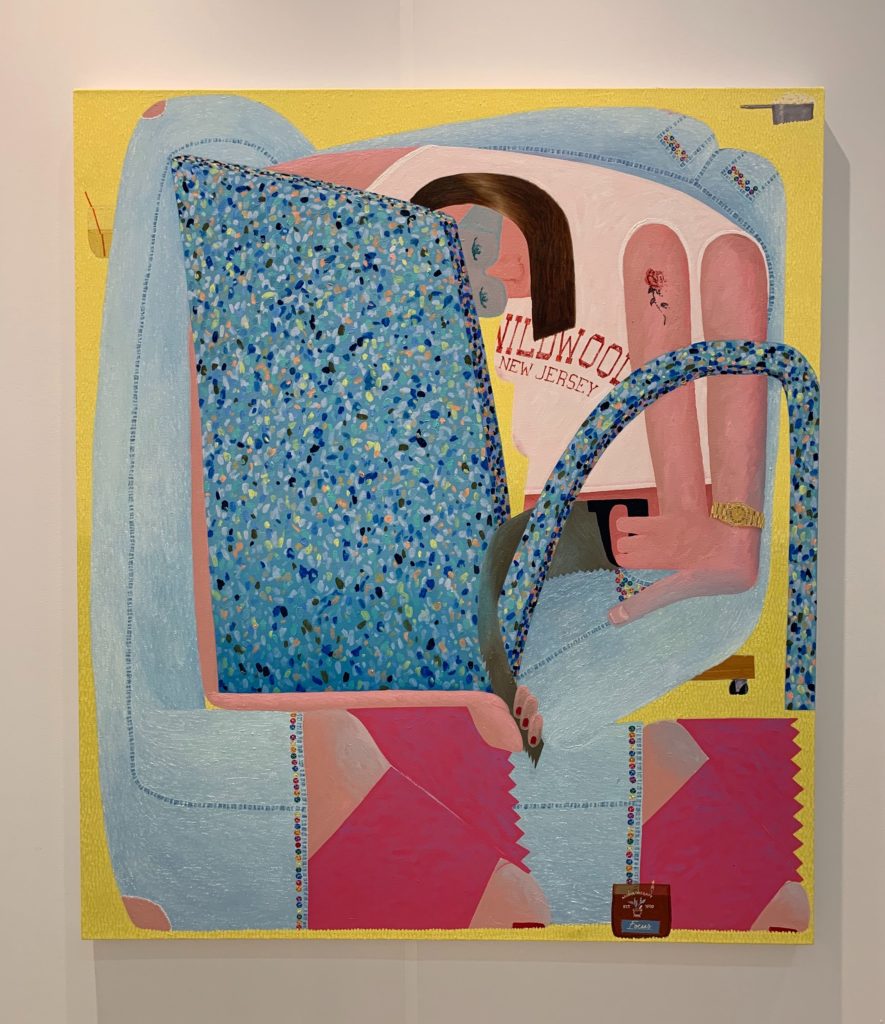
On the Velvet Underground’s White Light/White Heat, Lou Reed recites a short story called “The Gift” about a man who folded himself up into a package to mail himself to his girlfriend as a surprise—with tragic results. (She opens the box with a sheet-metal cutter, killing him.) Something similar but far less tragic seems to be going on in the paintings of Celeste Rapone, whose intricate portraits seem to show women going about their daily lives, only folded up into a box and steamrollered flat for good measure.
Rapone’s paintings often show private moments of repose, but they can also be curiously voyeuristic, in particular the one at the fair that seems to a flattened and foreshortened image of a nearly naked woman jump-roping while a man below keeps time. No matter what, each canvas requires a good deal of unfolding on the part of the viewer, sussing out which limb goes where and, say, how those bedazzled jeans pockets fit into the equation.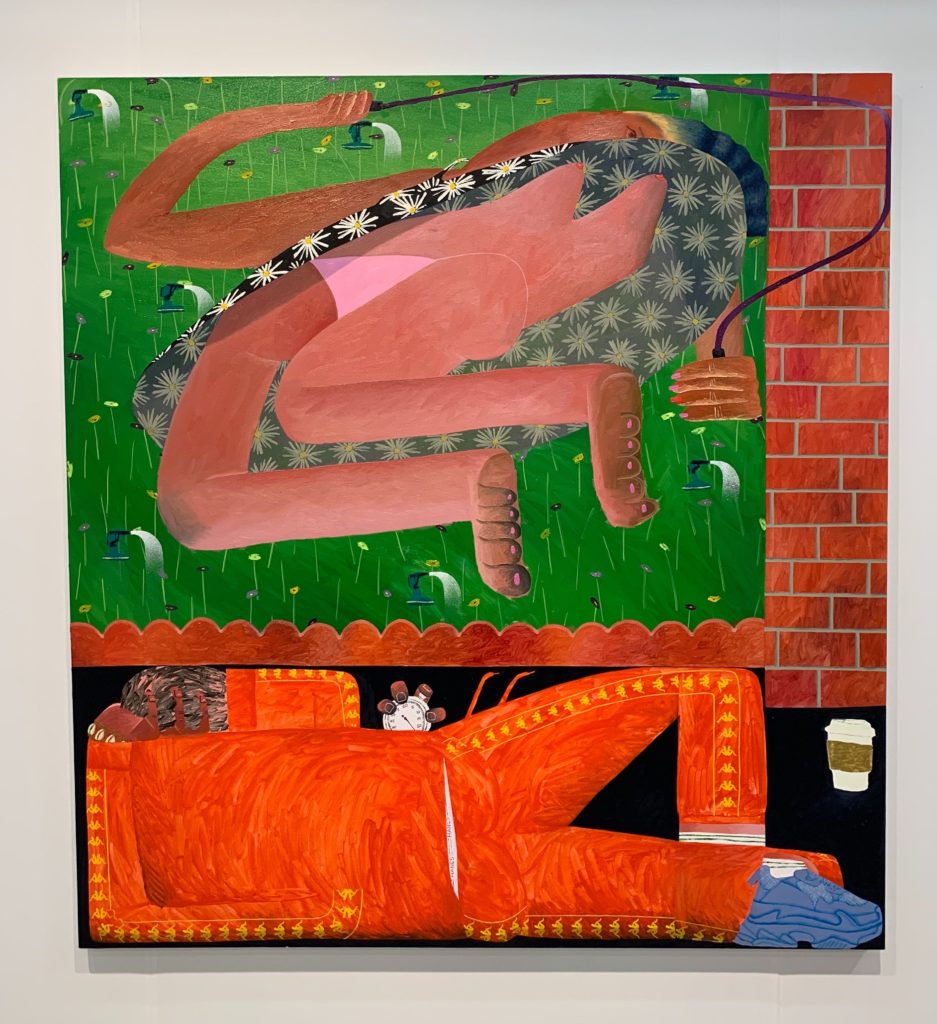
A graduate of the Art Institute of Chicago who now teaches there, Rapone has also seen her career unfolding rather quickly these days. Her second-ever solo show, at Josh Lilley’s London gallery through March 26th, sold out quickly, and the gallery says it is having trouble holding onto any of her work for long.

For anyone (like yours truly) whose first exposure to the world of collectible visual art was via superhero comics, Kusami J. Barnett’s solo booth in the fair’s Focus section might seem almost too good to be true. Relevant, socially incisive artworks made out of actual collectible comic books? Great Krypton!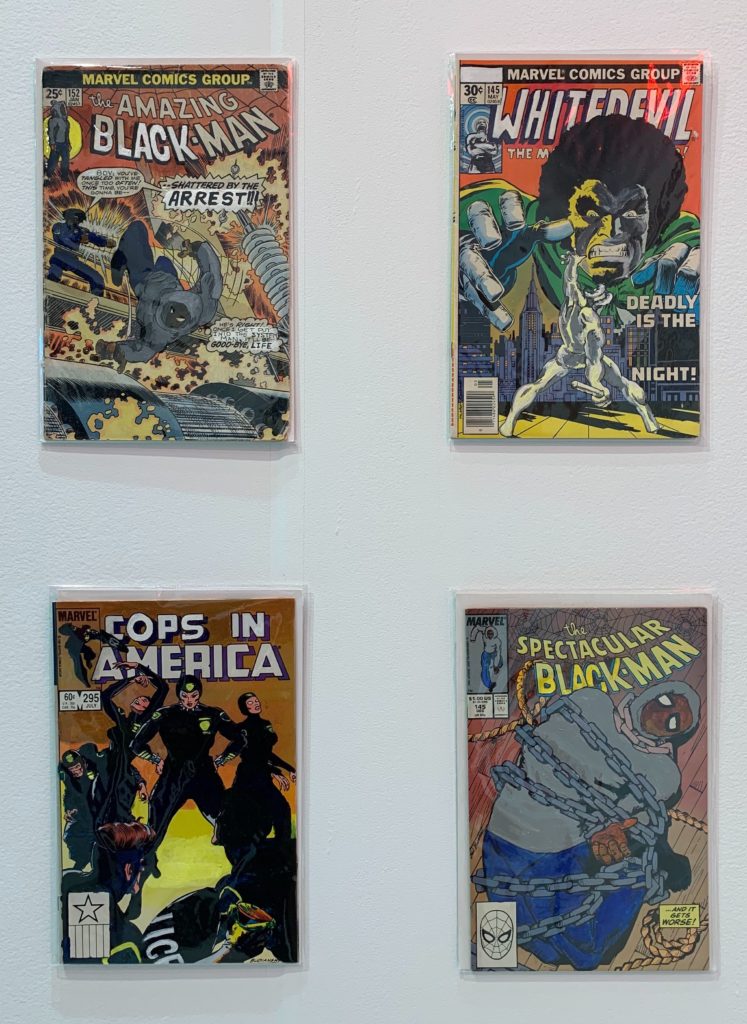
Of course, the subject of Barnett’s art is not fun at all. What he’s done is detourn Spider-Man as “The Amazing Black-Man,” hand painting jeans and a grey hoodie over the webslinger’s costume and reimagining our hero as fighting for his survival against a slew of foes that include “Police-Man” (sometimes Venom, sometimes other characters), “The Media’s Thug” (formerly the Incredible Hulk), a racist Captain America, Congress, the Democrats, and a version of Shazam whose magic word is… the N-word. In all, there are 100 comic adapted books—each responsibly encased in a polybag—hanging on the wall beneath a glowing neon sign. Some of the originals are (relatively) valuable, in fact.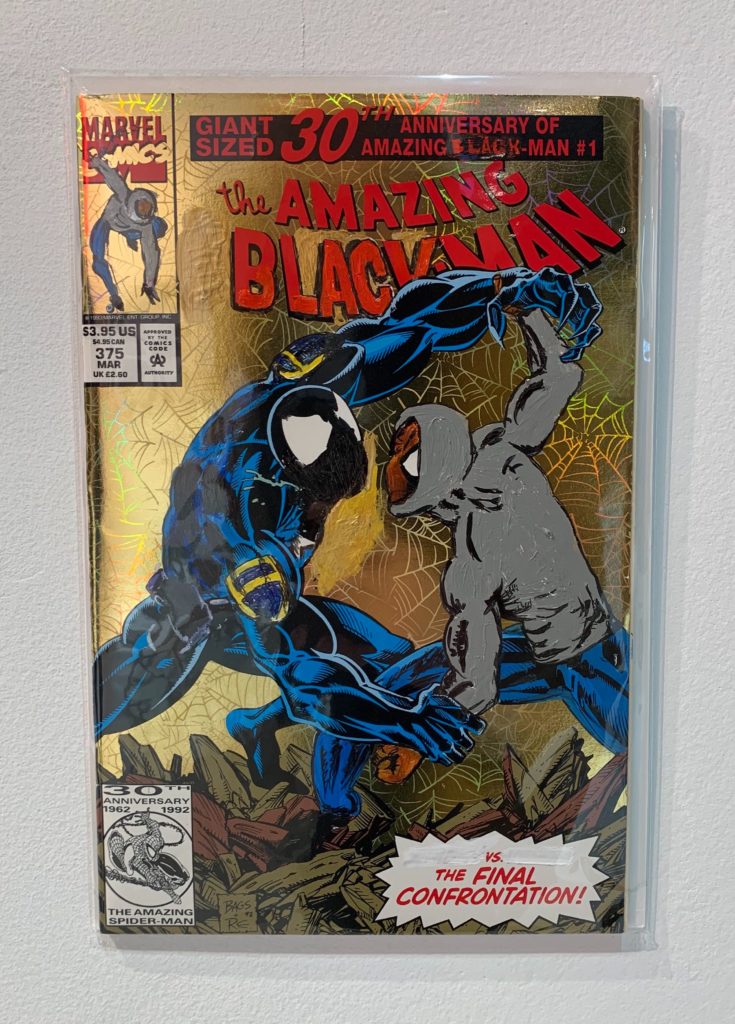
Born in Baltimore, Barnett teaches at the Art Institute of Chicago, and has a show coming up at the Children’s Museum of the Arts in New York. Will his work ever make it into the Marvel Cinematic Universe? Only time will tell.
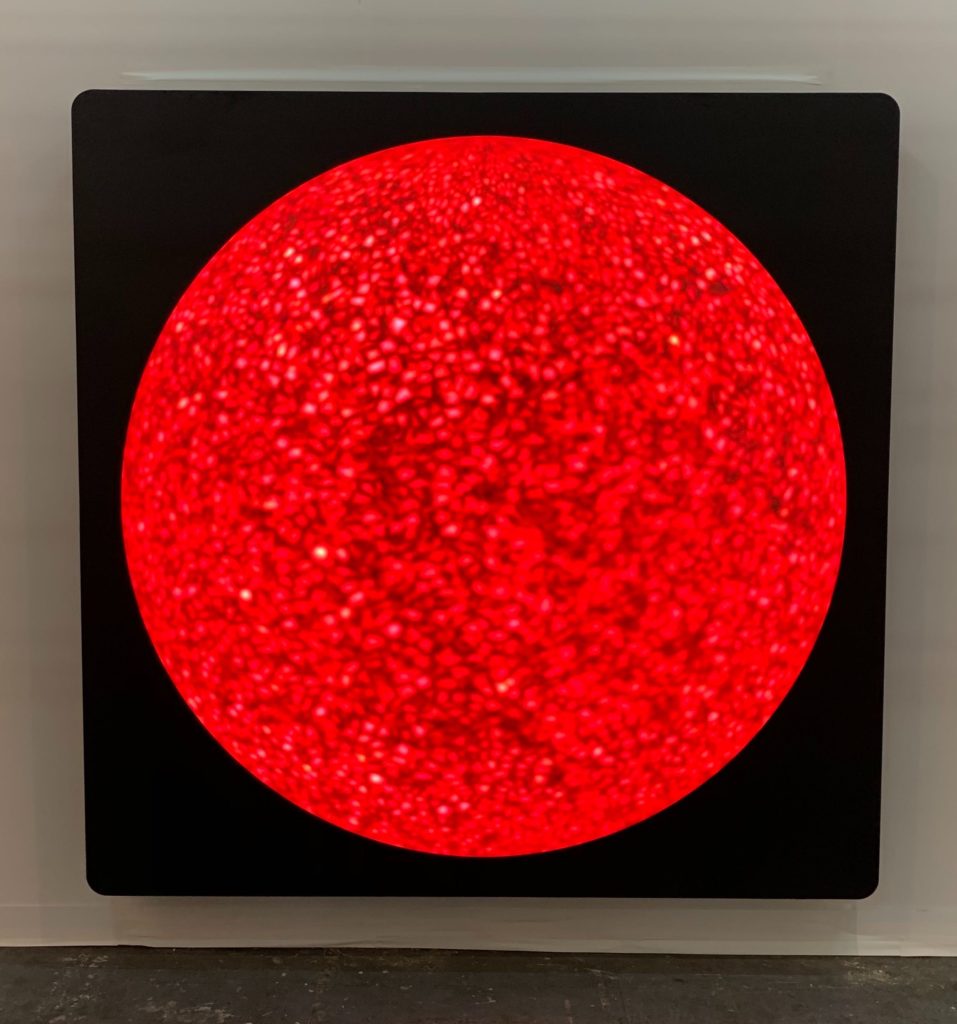
A little while ago, when NASA released astonishing close-up images of the sun’s pulsating surface, we at Artnet News scrambled to find an art angle on the story. Now, the new-media wizard Rafael Lozano-Hemmer has offered one up on the high-tech equivalent of a silver platter: tapping into a live feed from the Solar Dynamics Observatory, the artist has made a hypnotic digital work that allows you to watch the surface of the sun as it bubbles and flares, in real time, in the comfort of your own home.
Lozano-Hemmer has named this work after Anaxagoras, a 5th-century BC Greek scholar whose theories about eclipses make him a forefather of modern cosmogony. But the artist’s interest in monitoring the sun is also related to an incident of the more recent past: the solar storm of 1859, known as the Carrington Event, where a solar flare unleashed a massive geomagnetic storm that knocked out telegraph systems all over the earth.
Should something similar happen again—and a flare narrowly missed the planet in 2012—Lozano-Hemmer believes it would have a catastrophic impact on our digitally reliant societies.
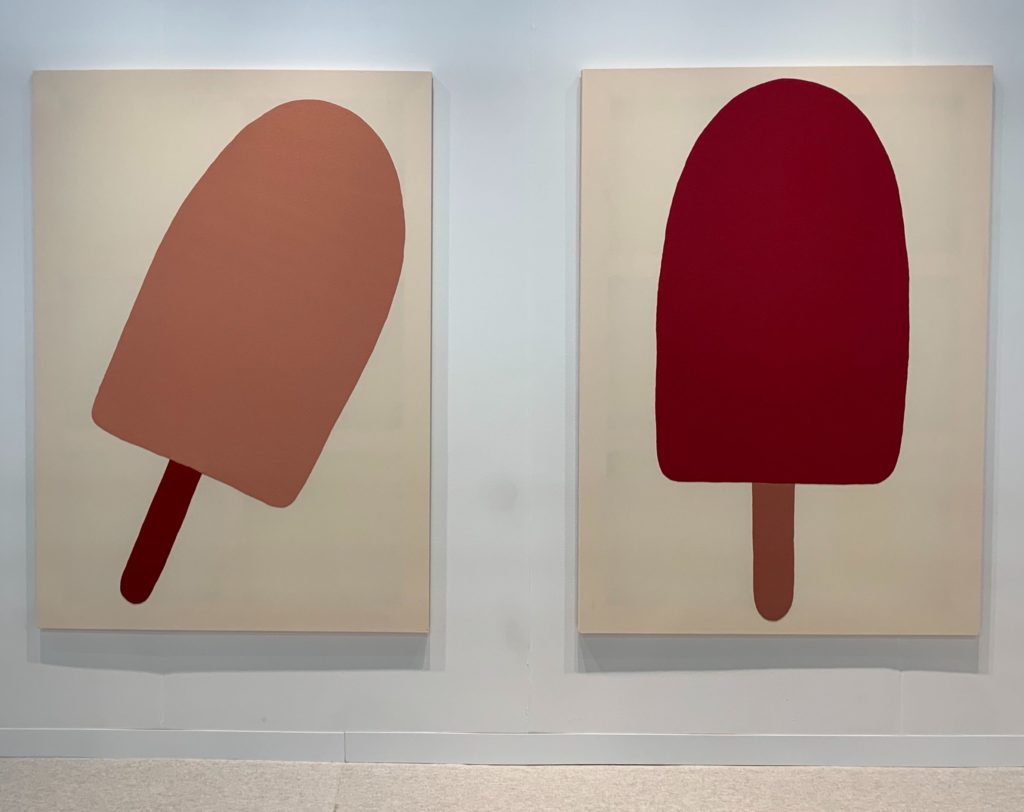
The Bologna-based artist Adelaide Cioni has developed a simple and soothing signature style, hand-stitching canvases with sheets of dyed wool fabric that she cuts into pleasing familiar shapes: a Popsicle, twinkling stars, a checkerboard. It’s a bit like Pop art but with the cynicism replaced by an ingenuous childhood sweetness, and, in such anxious-making times, her work is a very welcome sight at the fair.
One imagines it would be doubly welcome in Cioni and her gallery’s hometown of Bologna, where schools have been closed for weeks as northern Italy wages war against the coronavirus, and the city’s famous hospitals are under strain. Now the Italian government has said it will temporarily ban public kissing to combat the virus’s spread, putting a cap on Italians’ inborn gesture of amore. They should all get one of Cioni’s paintings in exchange, for a healthful little dose of kindness.